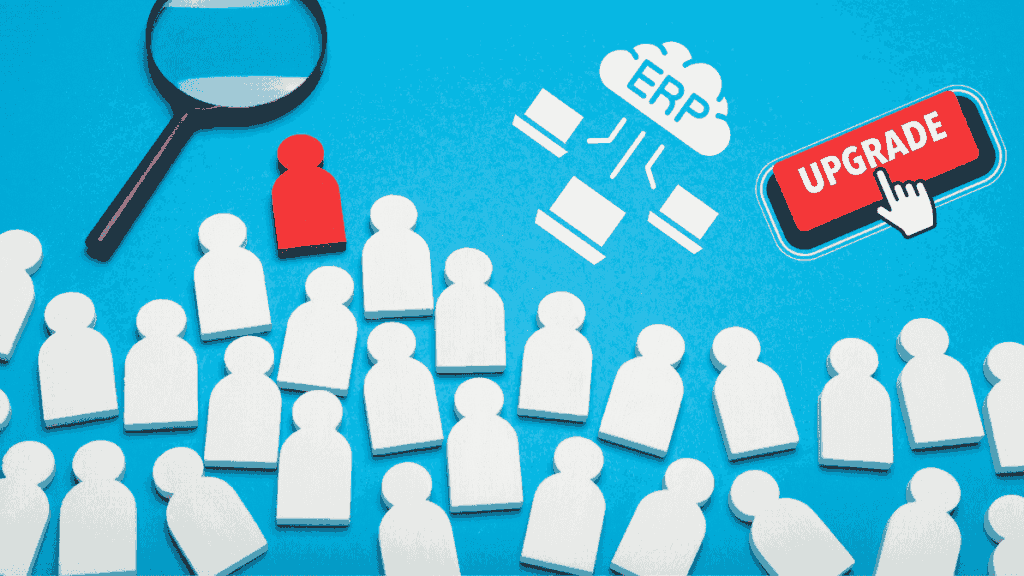Executive Summary
Global demand for ERP skills has outpaced supply—especially around SAP S/4HANA and Oracle Cloud. Deadlines and product roadmaps are amplifying pressure: SAP Business Suite 7 (ECC 6.0) mainstream maintenance ends Dec 31, 2027, with optional extended maintenance to 2030, pushing thousands of enterprises to modernize at once. At the same time, Oracle E-Business Suite 12.2 remains in Premier Support through at least 2031, allowing some firms to defer—but not avoid—modernization-driven skills needs.
Macro talent dynamics make this crunch more severe. IDC forecasts that by 2026, more than 90% of organizations will be affected by IT skills shortages, costing an estimated $5.5T in delays, quality issues, and lost revenue. Gartner’s S/4HANA adoption tracking suggests a long tail of ECC customers will still be on legacy beyond 2027, intensifying competition for scarce migration and run-state skills.
The takeaway: Leaders need an explicit, multi-pronged talent strategy—build, buy, borrow, and blend—backed by automation, accelerators, and outcome-based partner models.

What’s Driving the ERP Skills Crunch?
1. Converging timelines
- SAP ECC → S/4HANA: SAP ECC mainstream maintenance ends in 2027; optional extended to 2030. Migration programs are stacking up against finite specialist capacity.
- Oracle EBS 12.2 → Oracle Fusion Cloud: Oracle EBS Premier Support through at least 2031 buys time, but cloud adoption (Fusion) is still accelerating, shifting talent demand to SaaS skills, integration, and BPM.
2. Structural Tech Scarcity
3. Migration backlog
4. Cost of Deferral & Skill Alignment
SAP vs. Oracle: Where Skills Pressure Shows Up
SAP S/4HANA
- Hotspots: Central Finance, Group Reporting, Treasury & Risk, MDG, CPI, BTP, and data migration.
- Why scarce: ECC to S/4 is not 1:1—new data models (Universal Journal), new finance consolidation, and “clean core” extensibility require new patterns. Migration backlog intensifies demand. Oracle Fusion Cloud Hotspots: Financials, Procurement, Project Portfolio Management, OIC integrations, EPM Planning/Consolidation. Why scarce: SaaS cadence (quarterly releases), process re-design, and data + integration skill mix. Some EBS customers are deferring with 12.2 support through 2031, but many are still pivoting to SaaS, tightening the market
Oracle Fusion Cloud
- Hotspots: Financials, Procurement, Project Portfolio Management, OIC integrations, EPM Planning/Consolidation.
- Why scarce: SaaS cadence (quarterly releases), process re-design, and data + integration skill mix. Some EBS customers are deferring with 12.2 support through 2031, but many are still pivoting to SaaS, tightening the market
A Practical Playbook to Cope with ERP Talent Shortages
1. Build: Create an Internal ERP Academy
- Targeted upskilling on S/4HANA Finance, Central Finance, Group Reporting; or Oracle SaaS modules (Financials, Procurement, Projects), plus integration (CPI/OIC) and data.
- Leverage vendor programs (SAP Learning Hub; Oracle University & Guided Learning) and internal mentors/SMEs to compress learning curves.
- Leverage partners to build an internal training program. Process Paramarsh has expertise to create organization-specific learning content and host it.
- Bake certification goals into OKRs; pair learners with shadow roles during the current project to gain production-grade exposure.
2. Buy: Hire for “Spines,” Not Just Modules
- Prioritize enterprise architects, data & integration leads, test automation engineers, release/change leads—roles that unlock throughput across multiple workstreams.
- When hiring, assess for modern patterns (e.g., Fit-to-Standard, clean core, extensibility on SAP BTP / Oracle PaaS) rather than just legacy configuration depth.
3. Borrow: Structured Partner & Augmentation Strategy
- Use staff augmentation for peak workloads and niche skills (e.g., S/4 Central Finance mapping, Group Reporting, Treasury, Oracle EPM planning, automated testing).
- Employ outcome-based “squad” models (blended on/off/nearshore) to own a capability (e.g., Data Migration Factory, Integration Factory), measured on velocity and quality—not bodies on seats.
- Process Paramarsh can provide qualified resources to deliver ERP upgrade, augment teams with additional resources for dynamic workloads, and provide fixed cost or outcome based delivery.
4. Blend: Productize Your Program
- Stand up Factories and CoEs with reusable assets: data migration playbooks, test libraries, interface stubs, regression packs, and deployment scripts.
- Adopt automation – test bots, data quality rules, CI/CD for transports, and compliance checks—reducing dependency on scarce manual skills while improving release cadence.
5. Reduce Demand for Scarce Talent
- Fit-to-Standard, Clean Core: minimize custom code to reduce need for rare developers later.
- Prebuilt accelerators: adopt best-practice processes, rapid implementation kits, and templated controls rather than bespoke builds.
- Phased scope: time-box waves and sequence complex entities (e.g., Central Finance first, logistics wave later) to flatten skill peaks.
Governance That Works When Talent Is Tight
When ERP programs face skill shortages, strong governance is the difference between delays and delivery. Governance should not add bureaucracy—it should remove friction, ensure scarce talent is focused on the highest-value work, and make trade-offs visible to leadership.
1. Program Controls: Making Scarce Skills Count
- Establish design authorities that approve deviations from standard ERP functionality. For example, a request to customize SAP S/4HANA Finance should be reviewed against “fit-to-standard” policies before consuming scarce ABAP or BTP developer hours.
- Create a decision matrix for common scenarios (customization vs. configuration, build vs. buy) so project teams don’t repeatedly escalate decisions, saving time for scarce architects.
- Define escalation pathways for cross-functional conflicts (finance vs. supply chain) so issues don’t stall delivery while waiting for specialist availability.
Rationale
By channeling decisions through structured controls, scarce ERP experts work on design that truly requires their input instead of being spread thin on repetitive or low-value debates.
2. Value Office: Prioritizing Outcomes, Not Just Tasks
- Link project metrics to business outcomes (e.g., reduce inventory by 5%, automate 60% of reconciliations) instead of counting deliverables produced.
- Continuously track benefit realization—for example, whether Central Finance reporting is already improving visibility into group cash flow.
- Use dashboards to highlight trade-offs: if scarce integration talent is tied up, leadership can see the downstream impact on reporting or compliance timelines and decide where to allocate capacity.
Rationale
When talent is scarce, leadership needs a line of sight to value, not just Gantt charts. The Value Office ensures effort is aligned with measurable business benefits.
3. Skills PMO: A Practical Workforce Plan
- Maintain a skills heat map showing current capacity, forecast demand, and lead times to source talent. Example: 2 Integration Architects required for Wave 2 in Q3; onboarding time is 90 days—so hiring or partner sourcing must start now.
- Track attrition and backfill risk explicitly. If a single Group Reporting expert leaves, the PMO highlights immediate contingency needs.
- Coordinate with HR, VMO and partners on upskilling pipelines (internal ERP Academy, external certifications) so junior staff are ready when waves peak.
- Include location strategy—onshore for workshops and design, offshore for configuration and testing—balancing cost with availability.
Rationale
Bottom Line: In talent-constrained ERP programs, governance is not red tape—it’s an operating model to keep scarce skills focused on what matters most, align leadership decisions with business outcomes, and plan talent supply before bottlenecks hit.
How Process Paramarsh Helps
Flexible Engagement Model & IT Staff Augmentation
Process Paramarsh blends onshore advisory and delivery, nearshore delivery and support, and offshore factories to flatten skill peaks and accelerate outcomes.
Fixed Bid & Outcome Based Models
Process Paramarsh offers fixed-price model that delivers defined ERP and digital transformation outcomes at a predictable cost, ensuring scope clarity, controlled risk, and measurable value for clients.


